Most folks assume you need several days to do Redwood National Park justice, but honestly, you can hit the park’s most jaw-dropping highlights in just one well-planned day. This northern California treasure covers nearly 140,000 acres—think ancient forests, rugged coastline, and meadows full of wildlife. With a little strategy, you can wander among 1,000-year-old giants, spot Roosevelt elk, and explore wild beaches, all in a single visit.
The secret? You’ve got to plan smart and pick the stops that really pack a punch. I’ve spent years wandering these towering forests, and over time, I’ve figured out how to see the essentials without feeling like you’re running a marathon. From the most accessible groves to scenic drives that really show off the park’s variety, this itinerary zeroes in on experiences that capture the true magic of the redwoods.
My one-day plan weaves together handpicked highlights across the park’s different regions. You’ll get time among the trees, coastal views, and plenty of chances to spot wildlife. Whether you’re driving up from San Francisco or just passing through on a bigger road trip, this guide will help you squeeze every drop out of your day in one of California’s most spectacular national parks.
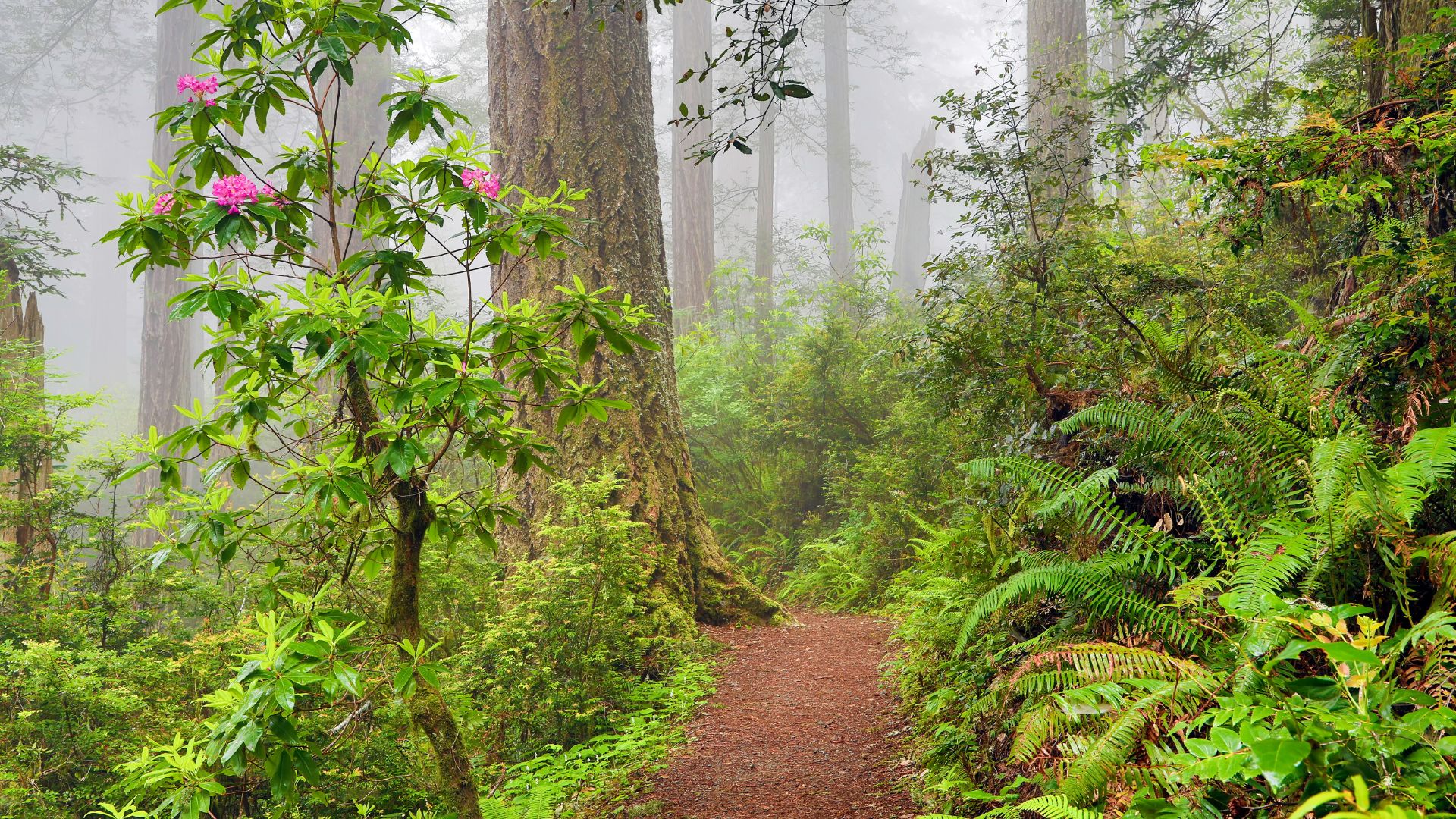
Essential Trip Planning for One Day in Redwood National Park
Redwood National Park hugs California’s northern coast, right off Highway 101. You’ll find main entry points near Eureka and Crescent City.
Spring to fall brings the best weather. Winter? It pours, and sometimes the rain closes roads and trails.
Where Redwood National Park Is Located
Redwood National Park stretches out along California’s wild northern coastline. The park covers around 139,000 acres from Crescent City in the north down to Orick in the south.
Here’s something a lot of people miss: the park actually combines four separate areas. Redwood National and State Parks include Prairie Creek Redwoods, Del Norte Coast Redwoods, and Jedediah Smith Redwoods state parks.
Key Gateway Towns:
- Crescent City – Northern entrance
- Klamath – Central access point
- Orick – Southern entrance
- Eureka – Major city, about 45 minutes south
Most folks come in through Orick or Crescent City. These towns make it easy to reach big-name spots like Fern Canyon and the tallest tree groves.
The park sits about 350 miles north of San Francisco. At its northern tip, you’re just 20 miles from the Oregon border.
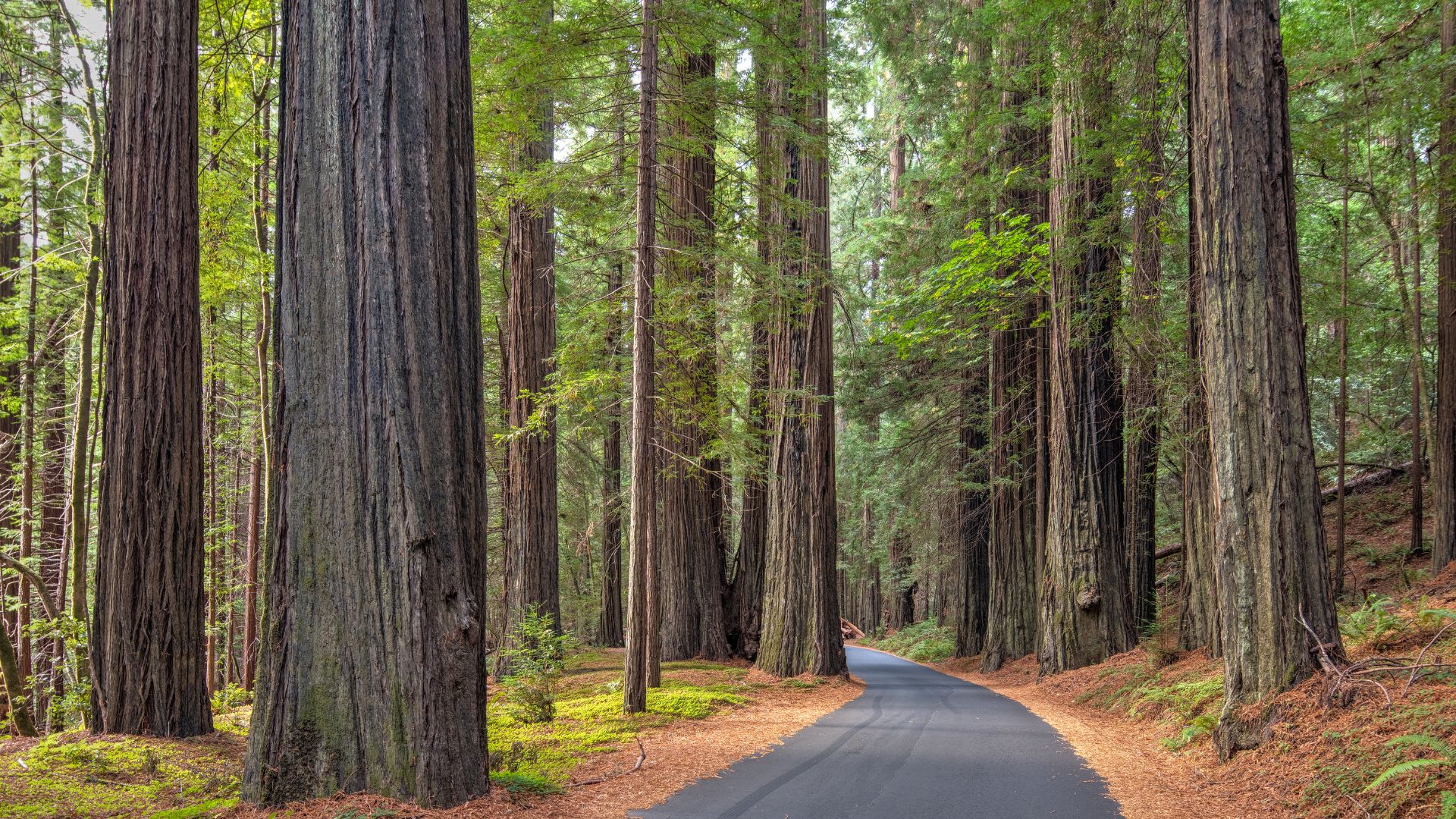
How to Get There and Navigating Highway 101
Highway 101 slices right through Redwood National Park from top to bottom. If you’re road tripping the California coast, it’s pretty hard to get lost.
From San Francisco: Head north on Highway 101 for about 6 hours. You’ll hit the southern entrance near Orick.
From Portland: Drive south on I-5, then swing west on Highway 199 through Crescent City. Plan for about 5 hours.
From Eureka: Just head north on Highway 101. In 45 minutes, you’ll reach the main park areas.
I always download offline maps before heading in. Cell service drops out in the park’s remote corners.
A few road notes:
- Gold Bluffs Beach Road isn’t for low-clearance cars
- Some scenic drives close during winter storms
- Trailhead parking fills up fast, especially by mid-morning
The Newton B. Drury Scenic Parkway is a sweet 10-mile alternative to Highway 101. It takes you right through massive redwood groves, and you won’t have to dodge big trucks.
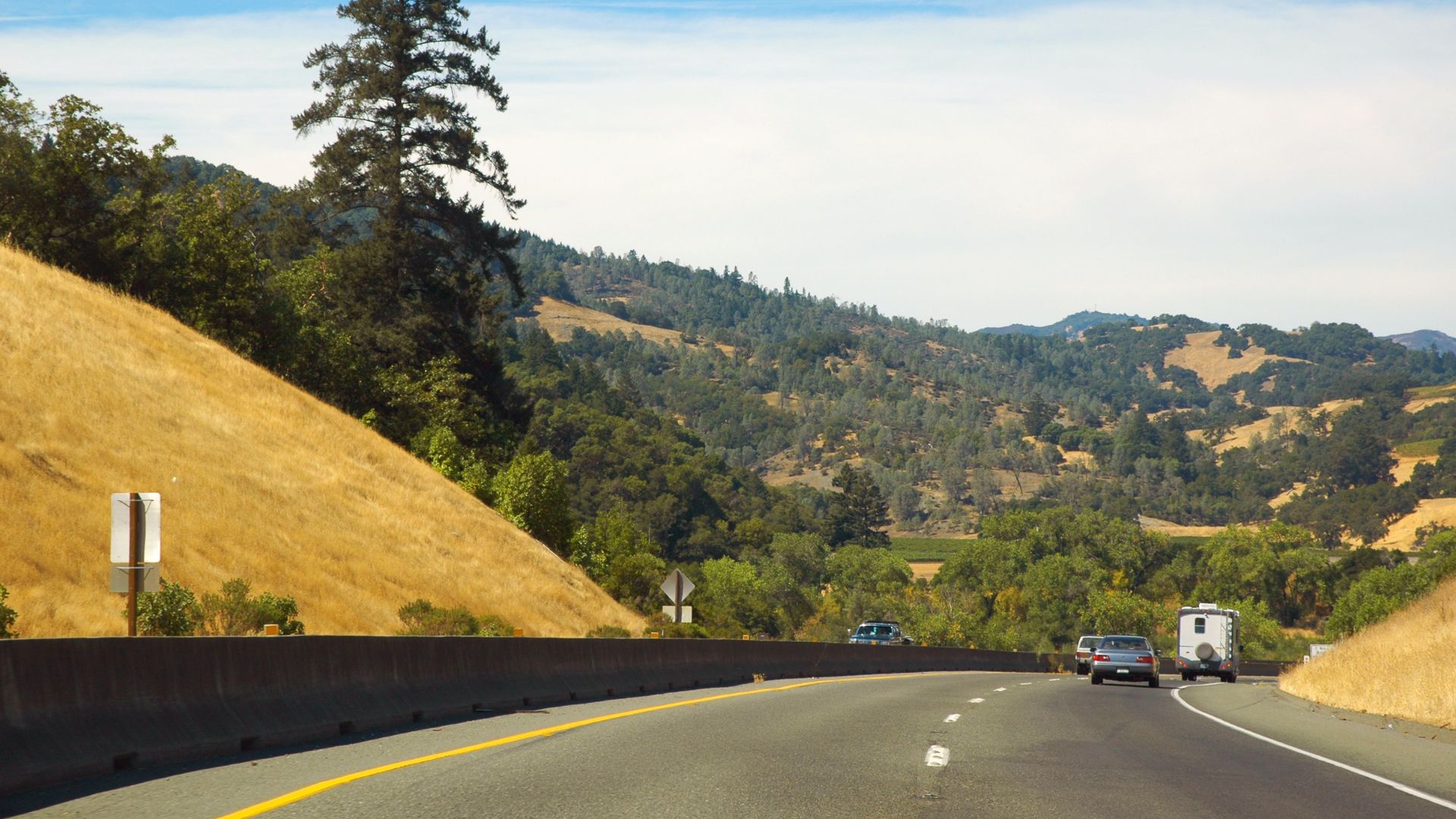
Best Times to Visit and What to Pack
May through October is prime time for Redwood National Park. Summer days are warm and dry—perfect for hiking and snapping photos.
Best Months:
- May-June: Cooler, fewer crowds
- September-October: Crisp air, clear skies
- July-August: Warmest, but also the busiest
Winter rains can close roads and turn trails into a muddy mess. December through March is for the die-hards.
Don’t forget:
- Layers – Coastal fog can drop temps by 20 degrees
- Rain jacket – Weather flips fast near the ocean
- Sturdy hiking boots – Trails get slick and muddy
- Water and snacks – Not many services inside the park
- Camera – Trust me, you’ll want photos
Morning fog rolls in all year along the coast. It’s moody and beautiful for photos, but can make driving tricky.
Bring more water than you think you’ll need. Facilities are few and far between, and you’ll probably drink more than you expect on a full day of hiking.
I always check the park website for the latest on road and trail closures before I go. Redwood is one of those parks where last-minute changes happen.
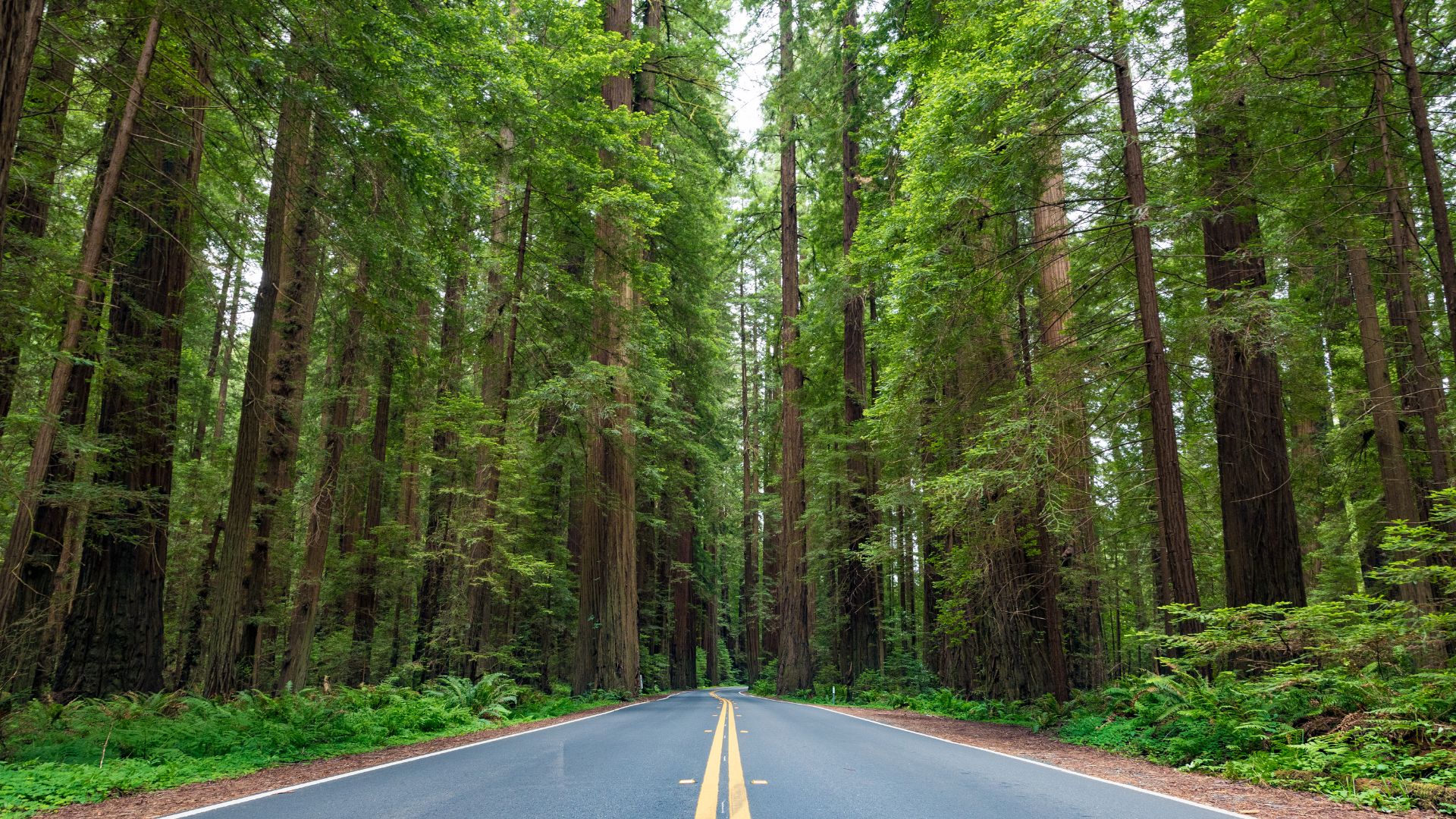
Must-See Highlights for the Ultimate Redwood Experience
Lady Bird Johnson Grove Trail is a gentle intro to California’s ancient giants, while Fern Canyon feels straight out of a movie. Tall Trees Grove? That’s where you’ll find the tallest of the tall.
Lady Bird Johnson Grove Trail
This 1.3-mile loop is great if you’re new to California redwoods. The paved path is easy for almost everyone.
I like to start here. It gives you a real feel for the redwood forest. You’ll need about 45 minutes if you take it slow.
Why this trail stands out:
- Flat, easy walking
- Signs that tell you about redwood ecology
- Gorgeous photo spots everywhere
- Usually less crowded than the big-name sites
The grove honors Lady Bird Johnson, who helped make the park happen. You’ll walk among trees that have seen a thousand years.
The trail links to the parking lot via a short access path. If you go in the morning, the light is just magical for photos.

Fern Canyon and the Legendary Fern Canyon Hike
Fern Canyon is wild—literally. The canyon walls shoot up 50 feet, blanketed entirely in ferns.
You’ll get your feet wet here. The hike means wading through shallow creek water. Waterproof shoes or boots you don’t mind soaking are a must.
Trail basics:
- Distance: 1 mile round trip
- Difficulty: Easy to moderate
- Highlights: Creek crossings, fern-covered walls
- Best time: Late morning for the best light
They filmed scenes for Jurassic Park 2 here. Walking through the green tunnel, it’s easy to see why.
You’ll balance on logs and rocks to cross the creek a few times. After rain, the trail gets muddy.
Plan on 30-45 minutes for this one. Bring your camera—the fern walls are unreal.

Tall Trees Grove: The Iconic Redwood Walk
Tall Trees Grove is home to some of the tallest trees anywhere. You’ll need a permit from the visitor center to hike here.
The hike is 4 miles round trip, dropping you into a grove where redwoods tower over 350 feet. It’s tougher than the other trails but worth every step.
Need-to-knows:
- Permits: Only 50 per day
- Difficulty: Moderate, with some steep parts
- Time: 2-3 hours
- Elevation: 800 feet down, then back up
Honestly, this is my favorite redwood spot. You can’t grasp the scale until you’re there, craning your neck.
The trail drops steeply through several forest layers. At the bottom, you’ll find the giants along Redwood Creek.
Pack water and snacks. The climb back up is a workout, but the views will stick with you.
Scenic Drives, Short Walks, and Grove Explorations
The best way to see Redwood in a day? Mix scenic drives with short walks among ancient trees. These routes give you easy access to massive redwoods and coastal views—without committing to all-day hikes.
Newton B. Drury Scenic Parkway
This 10-mile drive runs through Prairie Creek Redwoods State Park, right alongside Highway 101. I always tell friends to take this route—it’s a straight shot through old-growth redwoods.
You’ll find plenty of pullouts to hop out and wander among the giants. Big Tree is a must-see—just a short, flat walk from the road puts you right at its base.
Don’t miss:
- Prairie Creek Visitor Center
- Big Tree parking area
- Corkscrew Tree (yep, it spirals)
- Loads of scenic pullouts
The road is smooth but can get narrow. I’ve watched folks clip their mirrors on tree trunks—so take it slow and stay in your lane.
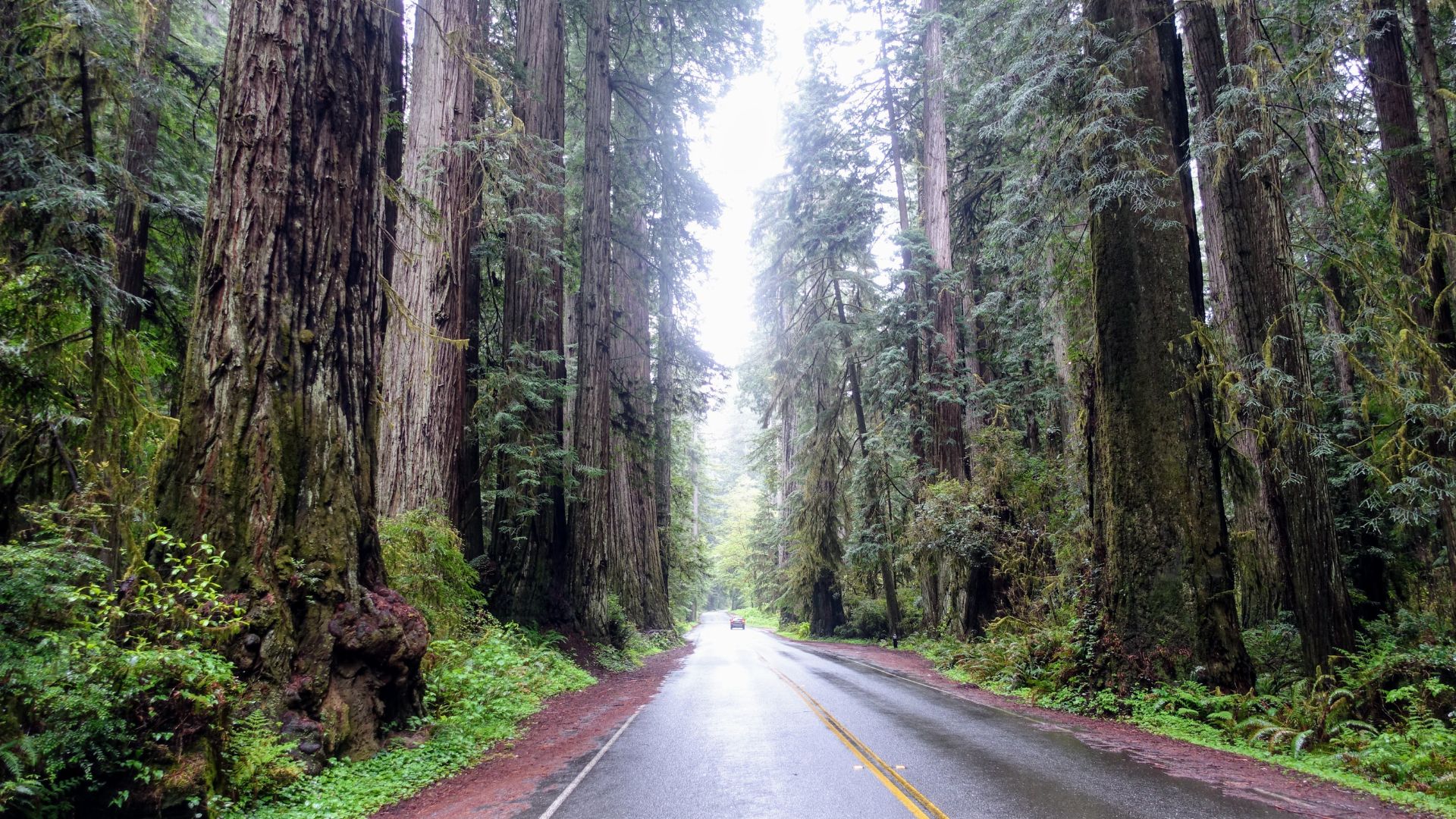
Avenue of the Giants
About 45 minutes south of the main park, this 31-mile drive follows the Eel River through Humboldt Redwoods State Park. It’s packed with some of the best redwood groves in California.
Highlights:
- Founder’s Grove (easy half-mile loop)
- Immortal Tree (drive right up)
- Rockefeller Forest (largest old-growth stand)
The whole drive takes about 2 hours if you stop a lot. If you’re short on time, pick just one or two groves to explore.

Big Tree Wayside and Cathedral Trees Trail
Big Tree Wayside is the quickest way to stand next to a giant. The flat, easy trail is less than 10 minutes each way.
Trail info:
- 0.3 miles roundtrip
- 15-20 minutes
- Super easy, flat path
Cathedral Trees Trail is nearby and loops through a natural circle of redwoods. It’s only 0.3 miles, mostly flat, with some boardwalks.
The spot is a photographer’s dream—the trees form a kind of natural amphitheater.
Trillium Falls Trail
Looking for a longer walk? Trillium Falls Trail is a 2.5-mile loop that mixes redwoods with a charming waterfall. The trail starts near Elk Meadow Day Use Area and has more variety than most short hikes here.
What you’ll find:
- 2.5-mile loop
- 1.5-2 hours hiking
- Moderate difficulty, a bit of elevation
- Waterfall is best in spring
You’ll wind through second-growth redwoods and reach the 10-foot falls. The water flows year-round but really roars December to May.
I’m a fan of this trail if you want a taste of both forest and water. There’s parking for about 20 cars, and restrooms at the trailhead.
Exploring the Coast & Meadows: Beaches, Elk, and Wild Views
Redwood’s coast delivers some of the most dramatic scenery around. Gold Bluffs Beach has rugged coastline, and Prairie Creek meadows are a favorite for elk spotting. These spots prove the park’s got way more than just towering trees.
Gold Bluffs Beach and Gold Bluffs Beach Campground
Gold Bluffs Beach runs for miles along the Pacific, with golden sand and wild rock formations. I love stopping here for a break between hiking adventures.
There’s a $12 day-use fee during peak season, but your America the Beautiful Pass works too. The road in winds through grasslands where elk often hang out.
What you’ll see:
- Wide, sandy beach with ocean views
- Elk sometimes wander right onto the sand
- Primitive camping at Gold Bluffs Beach Campground
- Easy access to Fern Canyon trailhead
The campground sits just behind the beach dunes. It’s basic—no hookups—and fills up fast in summer.
Bring extra layers. Coastal fog and wind can roll in out of nowhere, even on sunny days.
Prairie Creek Elk Meadows and Elk Prairie Campground
Prairie Creek Elk Meadows is the best spot to watch Roosevelt elk do their thing. These huge animals graze the open fields all day.
You’ll find the main viewing area right off Highway 101. I’ve seen herds of 20 or more elk here, especially in the early morning or late afternoon.
Elk viewing tips:
- Keep at least 50 yards away
- Don’t approach or feed them
- Binoculars help a lot
- Park only in marked spots
Elk Prairie Campground sits right by the meadows. It’s got 75 sites, restrooms, and potable water, managed by Prairie Creek Redwoods State Park.
The visitor center is handy for info on elk and park activities. In summer, rangers sometimes offer evening programs.
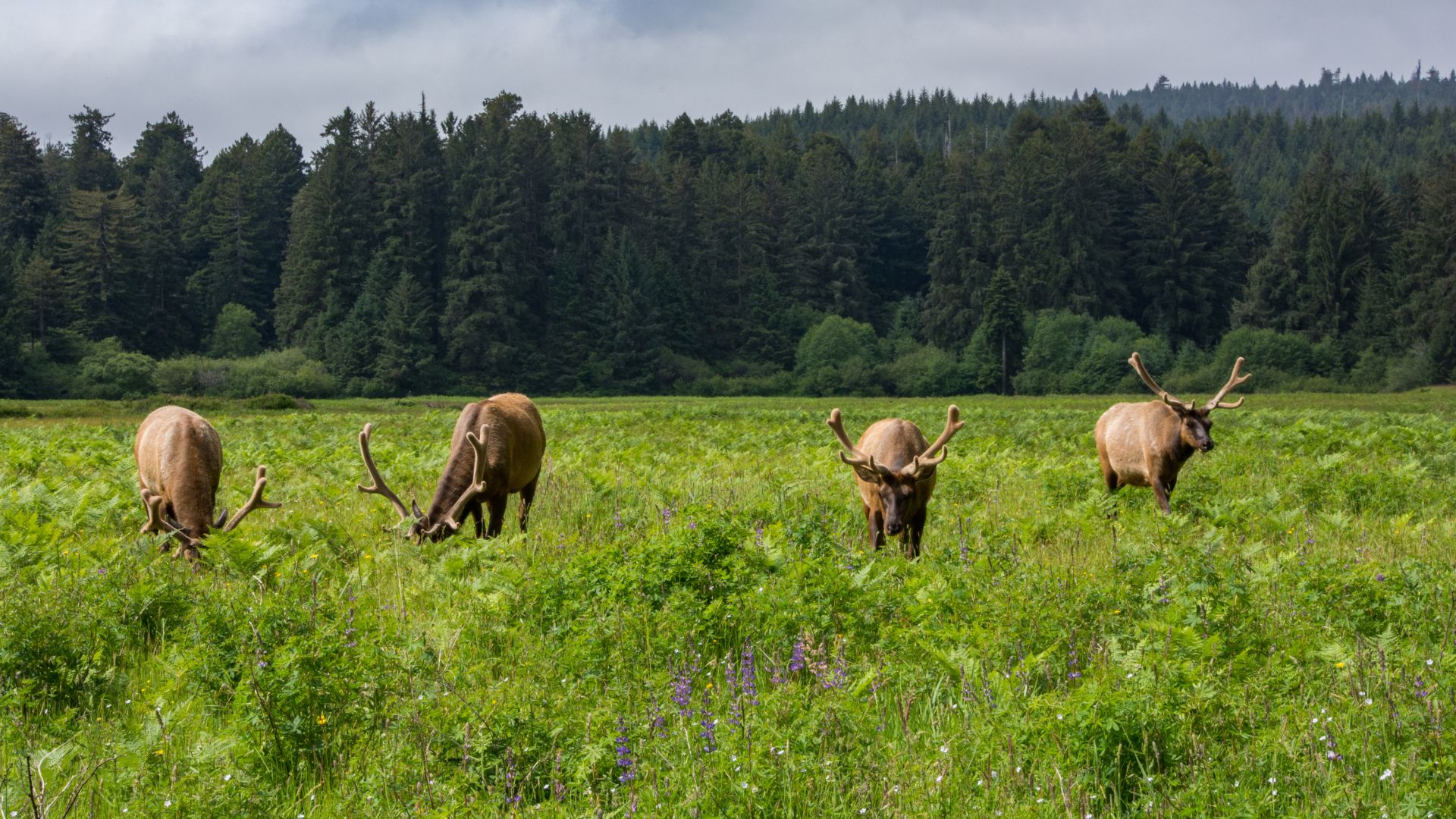
Klamath River Overlook and Hidden Beach
Klamath River Overlook sits right where the Klamath River empties into the Pacific Ocean. The short stroll from the parking lot brings you to a clifftop with some truly jaw-dropping views.
I’ve watched the sun set here, and honestly, it’s a scene that sticks with you. The overlook rises about 200 feet above the water, giving you a clear look at the river mouth and those rugged sea stacks just offshore.
Getting there:
- Turn onto Requa Road from Highway 101
- Drive about 2.5 miles until you reach the overlook
- There’s free parking and restrooms, which is always a bonus
Hidden Beach waits below the overlook, but it’s not exactly a casual walk. You’ll need to tackle a steep trail that drops around 300 feet to reach this tucked-away stretch of sand.
Down on the beach, you’ll find tide pools and plenty of driftwood—though I wouldn’t mess around if the tide’s coming in. Double-check the tide charts before you start that descent.

The Northern Stretch: Jedediah Smith Redwoods and Surroundings
Up north, Redwood National Park really shows off its wild side. The old-growth groves here feel almost untouched, and the rivers look like something out of a postcard.
You get these massive trees, crystal-clear water that’s perfect for a swim, and you’re never far from a quirky coastal town. It’s a mix I never get tired of.
Jedediah Smith Redwoods State Park
Jedediah Smith Redwoods State Park sprawls over 10,000 acres and, in my opinion, it’s the real heart of the northern redwoods. Some of the world’s largest trees stand right here, and the old-growth forests feel almost primeval.
A few trails I always recommend:
- Stout Grove Trail (0.6 miles): If you want to see the tallest giants up close, this is the place
- Grove of Titans Trail (1.7 miles): You’ll find the Lost Monarch here—its trunk is wider than a tennis court, which never fails to impress
- Boy Scout Tree Trail (5.2 miles): For a full-on forest adventure, this one’s my top pick
Howland Hill Road cuts through the best of the park. It’s narrow, dusty, and winds between enormous trees and even a covered bridge.
Camping here feels special. The campground nestles right in the redwoods, so you wake up surrounded by these ancient towers.
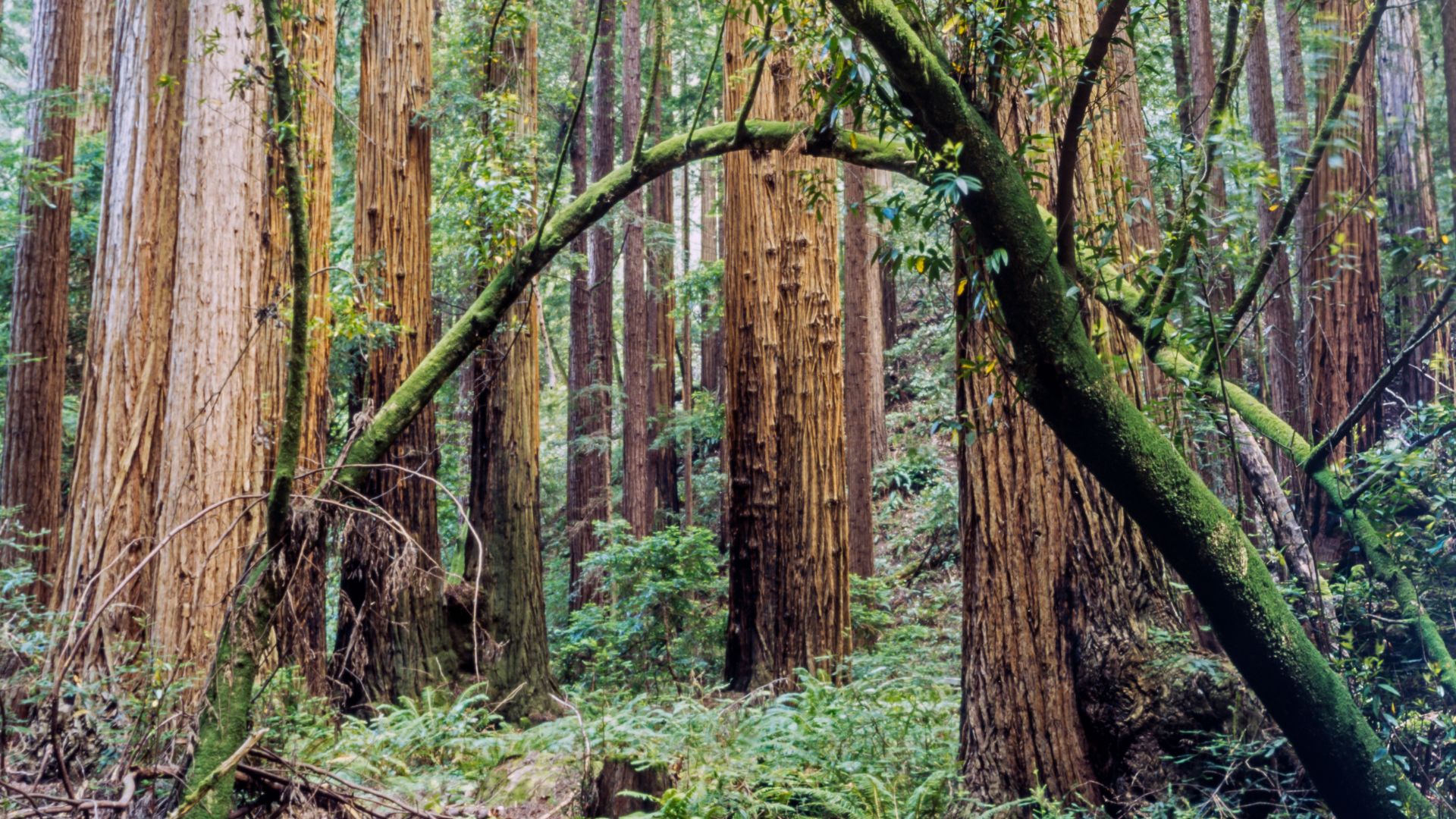
Smith River Adventures
The Smith River slices through Jedediah Smith park, and I keep coming back just for the river alone. In summer, the water turns almost glassy and clear—absolutely perfect for cooling off.
Spots along the river I keep going back to:
- Myrtle Beach: Rocky shorelines, deep swimming holes, and usually some peace and quiet
- Society Hole Day Use: Nice little spot for launching a kayak or just hanging out
- Jedediah Smith Campground: If you want easy river access, this is your stop
Several hiking trails hug the riverbanks, and I love the sound of the water as you walk the Jedediah Smith River Trail.
After a hot hike, diving into that cool, clear river feels incredible. The water’s always chilly, but from June to September, it’s just right for a swim.
Del Norte Coast and Crescent City Explorations
Crescent City is just a quick 20-minute drive from the redwood groves, and honestly, it’s become my go-to spot for exploring the area. I usually swing through this little coastal town for a good meal, to grab supplies, or just to soak up those ocean views.
The Del Norte Coast puts on a show where ancient forests lean right up against the wild Pacific. That mix of massive trees and crashing surf? It always stops me in my tracks.
Key stops I recommend:
- Crescent City Harbor: Grab fresh seafood and take in the lighthouse views.
- Battery Point Lighthouse: You can walk to it during low tide—pretty cool, right?
- Pebble Beach: Perfect for tide pooling or hunting for driftwood.
You’ll find plenty of restaurants and hotels in town if you need a break from camping. After a long hike among the giants, I can never resist the local seafood—there’s just something about it that hits the spot.

